Editorial
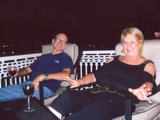
Happy New Year! For no readily apparent reason, I find myself strangely comforted by the century being now in its second decade (the 21st century began in 2001, really it did...). Somehow, the first nine years felt like a mess to me, but it seems to be stabilizing now. Part of this perceived stability comes from the many small and often invisible changes made to the Model Engine News website to make it better. If you look in the New and Updated Pages Index during January, you will notice a lot of old pages got "touched". This happens when a new page references an old one. First, if it is really old (uses a small serif font and has no cascading style sheet (CSS) formatting), it is totally reformatted and spell checked. Next I look at the page in Firefox with the HTML Validator plug-in and if the page is not declared "Tidy", all of the HTML problems are fixed. Sometimes new material is added and letting readers know about that is hard. If it's an engine, it can be flagged through the Engine Finder, but even so, there's no ready way to highlight precisely what has changed. Rest assured though, if it's something significant that we've got wrong, we will always confess it as a News Item so you can un-remember the misinformation and replace it with the new (if only it were that simple  ).
).
Another change this month is a belated attempt to make that piece of rubbish Microsoft calls their web browser "play nice" with all the other web browsers. Site statistics show that about 55% of views take place using some version of Internet Explorer, so I suppose I should not be so prejudiced against it. If you are an IE user (and there is really nothing wrong with that—it does render text rather nicely), you may have noticed that some pages appear to have missing white space, especially before tabular data. Well, that should be universally fixed now through the wonders of CSS. The down-side is that some pages may now have too much white space under IE and others have not enough under any of the more standards compliant browsers such as Firefox, Chrome, Safari, and Opera, to quote them in descending order of popularity. C'est la vie. I'll fix it as I notice it, but overall, I think the change will result in more consistency with new pages, and possibly a better experience for the (slim) majority.

Speaking of HTML pages, we are approaching the magic one-thousand page mark. Currently, the MEN web site has 967 distinct pages of information. There are another 50 which are "invisible" for various reasons, so they are not counted. Our readership has been relatively stable over the past two years. Each month the site receives about 1,7 million "hits" from about 25,000 unique visitors, accounting for about 32,000 visits per month. Together, they consume about 21 GB of download traffic from the site and it is this bandwidth, plus the storage space of some 1.6 GB that is a direct operating cost which new Member payments help offset. So, Lurkers! If you like the site, become a Member by buying the DVD and supporting our continued existence. Model Engine News has been running since 1998, but the current format was introduced in June 2002, so we'll call that our Birthday and plan some special event for next year. And of course, Members can expect something extra to thank them for their support! If the cost seems high, that's because it's Life Membership (my life  ) as I felt that a lower annual subscription would (a) not fly, and (b) be too much trouble to administer, hence the one-time payment for all the hidden extras on site, and the extra goodies on the Members' DVD, such as a copy of the MBI Plans Book.
) as I felt that a lower annual subscription would (a) not fly, and (b) be too much trouble to administer, hence the one-time payment for all the hidden extras on site, and the extra goodies on the Members' DVD, such as a copy of the MBI Plans Book.
On the home front, it has been raining buckets all across the Wide Brown Land. Crops are ruined, townships isolated, shoes in closets going moldy. Given what we were facing a year ago, it would be funny if it weren't so tragic for so many. Ok, I'm off to the shop to deal with an outbreak of surface rust on just about everything, while you get to enjoy all our new offerings...
Vale: Webra GmbH
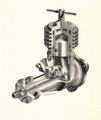
Slowly but surely, electric is winning and once proud names in the model internal combustion world are giving up, either voluntarily, or not so much. The latest is the Austrian company, WEBRA-Modellmotoren GmbH. Officially citing competition from low cost products out of China as the main factor, Webra ceased trading as of December 23, 2010. Webra engines date way back. The earliest mention I could find in an English language magazine was in Chinn's Accent on Power column in the December 1952 issue of Model Aircraft. In it, he states that "..the present Webra model was introduced to the German market a little less than eighteen months ago...", making it around somewhere close to mid-1951. This was a 2.46cc plain-bearing, radial-ported, FRV diesel with radial mounting. Chinn tells us that Webra accounted for 50% 0f the entries in the 1952 German Championships, including the winner. The air-brush cut-away seen here is the 1.526cc version tested by Chinn in MA, October 1953. Apart from the size, it is very similar to the first 2.5cc engine.
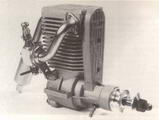
Webra went on to produce some of the most powerful and light diesel and glow motors on the international market in all the usual configurations, plain and ball-bearing, FRV and RRV. In later years they introduced a number of innovative four-strokes featuring toothed-belt drive to conical Aspin-type valves and cylindrical rotary valves, the latter resulting in a four-stroke with just three moving parts. Our Index of Model Engine Reviews lists no less than 42 Webra reviews from just the English language model magazines alone! As well as engines, the company produced an excellent range of R/C receivers, spark and glow ignition systems and on-board telemetry units. Webra always achieved quality in construction and performance and it is a sad, sad thing to see them have to call it a day after almost 60 years of excellence.
With Appologies to Harry Fjellström

The very observant may have noticed that a page dedicated to pioneer, Harry Fjellström, quietly appeared last month. This was intended to be a prominent part of the Grand, Bumper, Christmas Issue, but after formatting up the excellent work done by Lars Gustafsson and Adrian Duncan, I managed to completely forget it! So Harry has been rightfully placed in the "Pioneers" section of the People section of the left-hand navigation bar, and I've substituted crow for turkey at the dining table (Morten Bay Bug actually, sea food being the Aussie staple for yuletide dining these days).
The Original Rogstadius/Hellström
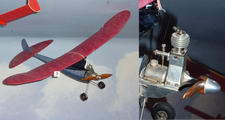
The Harry Fjellström page came about through research into Ivan Rogstadius and the Dyno-like design of his which appeared in "Teknik för Alla" of December, 1943. A Swedish reader of the story, Sten Persson, emailed that he believed the original engine and airframe still existed and were on display in the Sweden's new model aviation museum. The engine is mounted in Hellström's original 1943 pylon model as mentioned in the text and Sten has sent photos of both for us to enjoy. It's great to "close the loop" like this, going from a photocopy of an old engine plan, to discovering the designer still hale and hearty after over fifty years, and after paying him tribute through the fine efforts of someone I've never met, have yet another "stranger" provide photos of the actual engine and model! Our hope is that by placing it here, future researchers will find as factual an account as we are able to provide, with a lot less trouble, using modern search engines.
Davies-Charlton, Revisited

Rolling right along with communications from the outside world, we were privileged to exchange numerous emails with former D-C Ltd Managing Director and Dav-Cal founder, Bill Callow. Bill saw our DC Ltd Story on line and wrote to set the record straight about his roles in the company, plus other related matters. As a result, the page has undergone significant revision, hopefully for the better. Our scan shows Dav-Cal's first advertisement in the Aeromodeller, June 1983. Please re-read the whole saga as high-lighting the changes is just not practical. We truly appreciate the effort people like Bill go to in order to help us provide the most accurate information we can.
A Library search to find the first Dav-Cal advertisement accidentally uncovered a one page history of the DC Dart from Aeromodeller, March 1985. This was written by OFW (Pete) (sic) Fisher, who as you will read in the DC Ltd Story, was having short-run "Specials" made for him by Dav-Cal to retail under his own Performance Kits banner. For completeness, this has been OCR'd and cross referenced, changing only a remarkable number of typos. To access it, goto The Dart: 31 years of double top diesel history, and I'd sure like someone to decode the hidden meaning in that one for me!
Minimag Rides Again

Way, way back in the January 2006 issue, we mentioned the "Minimag" magneto, designed and manufactured at the time by Jim Shelley. Jim, who also wrote a rather nice book on Building the Maltese Falcon, found himself unable to continue with the manufacture of these magnetos due to advancing age, but did not want the device to die out, so offered all tooling, inventory, and training. I know a couple of people who looked seriously into the proposition, but finally decided against, so I figured the little magneto had died the death. Well, not so! The Minimag is now available again from Minimag Co, UK. As yet, the web site shows no prices, although there is a hint that as before, they will be available as kits, or fully assembled.
External Combustion Is Fun Too
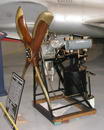
One that comes up from time to time is the Besler steam powered airplane from 1933. If I have the story right, the Besler brothers had some radical ideas about locomotive valve gear, but could not interest any of the major railways, So they produced a steam powered airplane using a simple engine engine plus their flash steam generator, and most important, condenser. When demonstrated, it secured sufficient attention that they moved on to land based transport (though a colleague did pursue the idea for a time with Boeing). The Besler aero engine was two cylinder, V configuration, but if you feel like building a model somewhat similar, Myers Engine Works sells a casting kit and plans for the three cylinder plant seen here, currently on display at the Air Force Museum in Warner Robins, GA.
Another Expansion Engine Example
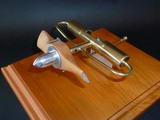
Considerably cheaper to build is the Pachasa air engine. The example here was built by Hayden Purdy (New Zealand) from the plans on this site, adapted in the best model engineering traditions to whatever he could find in the scrap box. This resulted in some rather thick walled cylinders, but as the engine is never likely to fly, this does not matter at all. He also substituted teflon for the phenolic rod originally called out for making the pistons; quite a sensible choice. The main thing is that it runs and is a credit to it's young builder, an upcoming engineer if ever there was one. You can click here for Hayden's video of the engine in action from front and back.
A New Old Tool from Hemingway
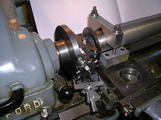
News from Hemingway Kits (UK) is that they will be shipping plans and castings for what head-honcho, Kirk Burwell, is calling the Westbury Eccentric Head (Kit HK2230). Launched in 1960 as an improved boring and facing head, it has a number of advantages over the Arnold Thorp designed Dore boring and facing head that it resembles, at least at first glance. The head is cast iron and has a bigger front-facing surface on its slide. Westbury's elegant "interceptor" assembly, seen mounted on the lathe bed in the photo above, can be set for forward-neutral-reverse whereas the Dore uses a pin set into the headstock and so was unidirectional and could not be instantly disengaged. The instructions include notes for how the device may also be used to perform offset turning for steam engine eccentrics and even crankpins! Making tools like these take time, but so does machining a Keats-type angle plate, which Kirk says this head can totally replace. Me, I'd like both.
Tlush
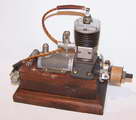
Tlush? Can't blame you if you've not heard of it. With a name even more unpronounceable than mine, it's probably not an engine that would get mentioned often in modelling or collecting circles due to the fear of occasioning irreversible tongue strain in the process. Still, as I had some photos, and David R Janson had provided a Tlush Review, and since there is a connection, albeit tenuous and disputed, to an Australian engine, we present the Tlush Super Ace 65 for your enjoyment and edification. If nothing else, you have to be impressed by the longevity of this old sparker. As to the Ozzie connection, that will have to wait until another long awaited piece is finished...
Spanish Bobcat
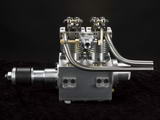
This is probably the only living plans-built example of the Nemett Bobcat in-line, twin cylinder, four-stroke. Designed back in 2009 by the late Malcolm (Nemett) Stride, plans had only just been offered at the time of his rather tragic passing. Ron Palmer ordered a set of plans and as far as is known, his was the only set delivered. As seen here, he has now completed his engine which is worthy of respect in every way. Ron (who lives in Spain), deviated only in the exhaust and ignition. I'm sure Malcolm would be chuffed.
New Books and Magazines This Month
The only new arrivals into The Library during December were Model Engineer and Model Engineers' Workshop magazines. The former surface mail via the local news agent and hence, late; the latter by direct air mail subscription, so totally up to date, but expensive—or so I thought. For a while now, the Australian Dollar has been hovering around parity with the US dollar, and doing quite well against Sterling, Yen, and the Euro too. So I ran the numbers and found I can now get an air mailed Model Engineer subscription AU$50 cheaper per year (26 issues) than buying it locally. No-brainer that, so done and done. The ME continues to include regular IC content from various authors, which is good, but not worth specific comment, so I'll fall back on reviewing an older book from The Library.

Our chosen subject this month is Know Your Model Aero Engines, by RH Warring, Model and Allied Press (MAP), Watford Herts, UK, 1979, ISBN 0852426070. This is a 6x8.5" soft bound booklet of 110 pages, printed in black and white. The binding, typical of the period and the same used in the last three Aeromodeller Annuals, is what I term "open at your own risk"; ie it's going to fall apart by itself anyway, but it will be quicker if you are foolish enough to open it further than 100°. The back cover states the book's purpose as "...provide easy reading and noncomplicated facts that will help any modeller get the best out of his model engine(s)—and dispel the mystery of technical terms and descriptions...". A worthy goal that, but there's a but.
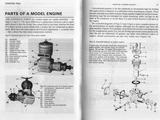
In simplifying matters, I think Warring went way too far. We have sixteen chapters of around 4-6 pages each on the usual subjects, engines (2-stroke) and parts thereof, starting, running in, tanks, props, etc, etc. All are short verging on the perfunctory, as are the four appendices; I mean why quote a formulae for BHP based on Mean Effective Pressure (!) which requires a calculator—and yes, we had them back in '79—then follow up with a page devoted to tables for converting some values of cc to cuin, and cuin to cc when this could be better delt with by giving another, far simpler formulae! Are you getting the idea I don't like this book very much yet?
No, wait. I've made up my mind. I hate it. It's superficial rubbish. In comparison, Dave Gierke's 2-Stroke Glow Engines covers the almost the same ground with better prose, better illustrations, better photos, and is just as "noncomplicated" for the novice engine user. Maybe I better look for some redeeming feature; I don't think I have a zero-star gif. The chapter on Marine Engines may contain a genuinely useful illustration dealing with flywheels and starter cords. On the other hand, the pressurized tank shown on page 53 is just so wrong that I don't want to talk about it. The photographic reproductions are clear enough, but the captions? I ask you... Photos on page 6 claim to show "typical" forms of diesel engines from Continental Europe and Britain. The names of the examples chosed are not even given, but they are, respectively, a FOK and a Foursome. The FOK is a very nice engine, but hardly contemporaneous with the poor old Foursome, and neither would I call the latter "[a] Typical form of the British diesel as it evolved". I give up. This book is without redemption.
At the time of writing, ABE Books lists six copies available at prices ranging between US$20 and a whopping $147.80 (from Schenectady, NY). The $20 copy is overpriced by about $30. I have a great respect for Ron Warring's contributions to the hobby and his writings, except for this one. Not recommended. Run away. Half-a star only because I don't have a zero-star icon  .
.
Engine Of The Month: Air-O-Diesel
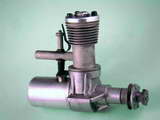
Feeling a little guilty over the coverage that British engines of old get in these pages, I asked Adrian to see what he had that was unusual and American. The result is this month's page filling in the gaps regarding the Air-O-Diesel. In the process of writing and editing the introduction to this engine, we got to thinking about the number of American diesel engine manufacturers catering to the US market of the 1946-48 period. The count comes out to ten, or eight if we drop two that announced product, but never produced (extra points if you can immediately name them  ). When you think about it, the number of manufacturers rivals that of the UK for the same period, although the latter had the edge in models and quantity. Still, it shows that were it not for the untimely arrival of the glow-plug, the US was well on the way to producing excellent diesels, of which, the Air-O turns out to be an prime example.
). When you think about it, the number of manufacturers rivals that of the UK for the same period, although the latter had the edge in models and quantity. Still, it shows that were it not for the untimely arrival of the glow-plug, the US was well on the way to producing excellent diesels, of which, the Air-O turns out to be an prime example.
Tech Tip of the Month
What better introduction can there be to 2011 than to add Yet Another Stuck Chuck Remedy to the list? Although very practical and simple, I doubt this one will catch on for reasons stated in the Stuck Chuck Page. I'm not giving a thumbnail picture of it here because that would totally give the game away, so click the link and see if you agree with my conclusions regarding why we won't see it used today.
European Odyssey

A surprising number of readers enjoyed the start of David Owen's Engine Odyssey so much that they emailed to tell him so! This month we conclude the story with his recount of the Continental part of the trip where we meet several European Names, and a couple of British ones who have made France their home. David is also responsible for our latest Watzit which we hope some reader may be able to help with.
 Vale: Webra GmbH
Vale: Webra GmbH
 With Appologies to Harry Fjellström
With Appologies to Harry Fjellström
 The Original Rogstadius/Hellström
The Original Rogstadius/Hellström
 Davies-Charlton, Revisited
Davies-Charlton, Revisited
 Minimag Rides Again
Minimag Rides Again
 External Combustion is Fun Too
External Combustion is Fun Too
 Another Expansion Engine Example
Another Expansion Engine Example
 A New Old Tool from Hemingway
A New Old Tool from Hemingway
 Tlush
Tlush
 Spanish Bobcat
Spanish Bobcat
 European Odyessy
European Odyessy
 Editorial
Editorial
 New Books and Magazines This Month
New Books and Magazines This Month
 Engine Of The Month: Air-O-Diesel
Engine Of The Month: Air-O-Diesel
 Tech Tip of the Month
Tech Tip of the Month
 Standard Stuff
Standard Stuff


 ).
).














 .
.

